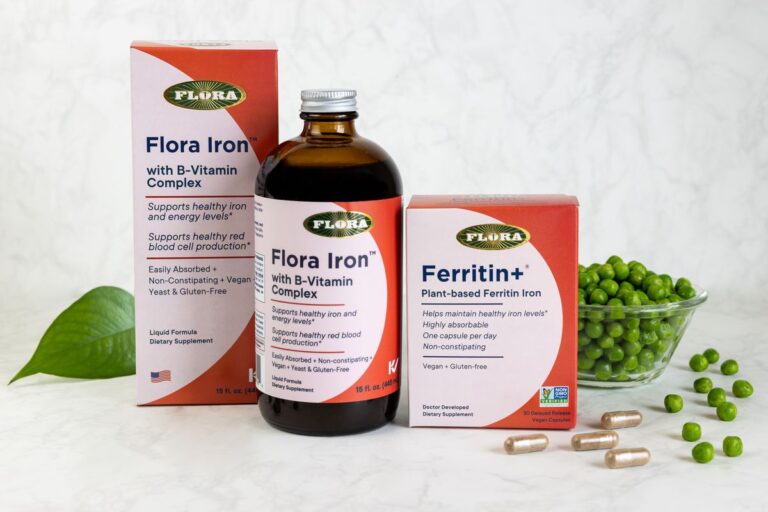Imagine your body is a high-performance vehicle, and iron is the premium fuel that keeps it running smoothly. Without enough of this essential mineral, you could end up with iron deficiency anemia—the most common form of anemia worldwide, according to the American Society of Hematology.
Here’s the deal: Iron is used to make hemoglobin, a protein in red blood cells that acts as an oxygen carrier, delivering life-giving oxygen to every tissue in your body. When your iron levels dip too low, your body can’t manufacture enough hemoglobin, leaving your cells hungry for air.
Are you at risk?
The truth is, many people are susceptible to iron deficiency. Like a silent threat, it can creep up slowly, leaving you exhausted, weak, and struggling to keep up with daily activities. Imagine running a marathon but your body only has a few drops of fuel left in the tank.
In this post we’ll discuss who’s at risk for iron deficiency, the symptoms to look out for, and how supplements like Ferritin+ and Flora Iron can help you maintain healthy iron levels.* Let’s get started!
Know Your Risk for Iron Deficiency and Take Action
With all its potential causes and risk factors, most people face at least some vulnerability to iron deficiency over their lifetime – whether it’s temporary or chronic.
The key is being proactive and recognizing if you belong to any high-risk groups so you can monitor yourself accordingly.
Some groups are more prone to iron deficiency than others. They are:
Women: Having a monthly period can put you at higher risk of losing too much iron through bleeding – especially if your flow is heavy. It’s like a slow but steady leak that can drain your iron reserves over time.
A recent study published in JAMA found 40% of American women and teenage girls had low levels of iron (1).
Pregnant Women: When you’re growing a baby, your iron needs skyrocket. After all, you’re building an entire life support system for two! It’s no wonder so many expectant moms end up anemic.
For expectant mothers, iron deficiency anemia brings increased risks of premature delivery and having a low birth weight baby who may face developmental delays. According to a 2012 study, supplementing iron could reduce the risk of low birth weight by a whopping 30% (2).
Kids and Teens: Growing bodies demand more iron. With their accelerated metabolisms, they can burn through nutrients faster than a race car guzzling gas.
Frequent Blood Donors: Every time you donate blood, you’re giving away some of your iron reserves. It’s a noble act of generosity, but one that requires monitoring your iron levels. Think of it like making frequent withdrawals from your body’s iron bank account.
Vegetarians/Vegans: Plant-based diets are great for so many reasons, but if you don’t strategically replace meat with other iron-rich foods, you could fall short on this essential nutrient.
People with Intestinal Issues: Conditions like Crohn’s disease, celiac disease, or gastric bypass surgery can seriously interfere with how well your body absorbs iron from food. All that nutrient wealth goes to waste if you can’t extract and process it properly.
Seniors: As we age, our ability to absorb iron can decline thanks to dietary changes, medications, and other factors. It’s just one more nutritional challenge that comes with getting older and wiser.
Athletes: Runners, cyclists, and other endurance athletes are at higher risk due to factors like foot-strike hemolysis (breaking down of red blood cells), increased iron needs, and gastrointestinal bleeding during long runs. It’s the price you pay for being a fitness warrior!
Iron Deficiency Symptoms: The Red Flags
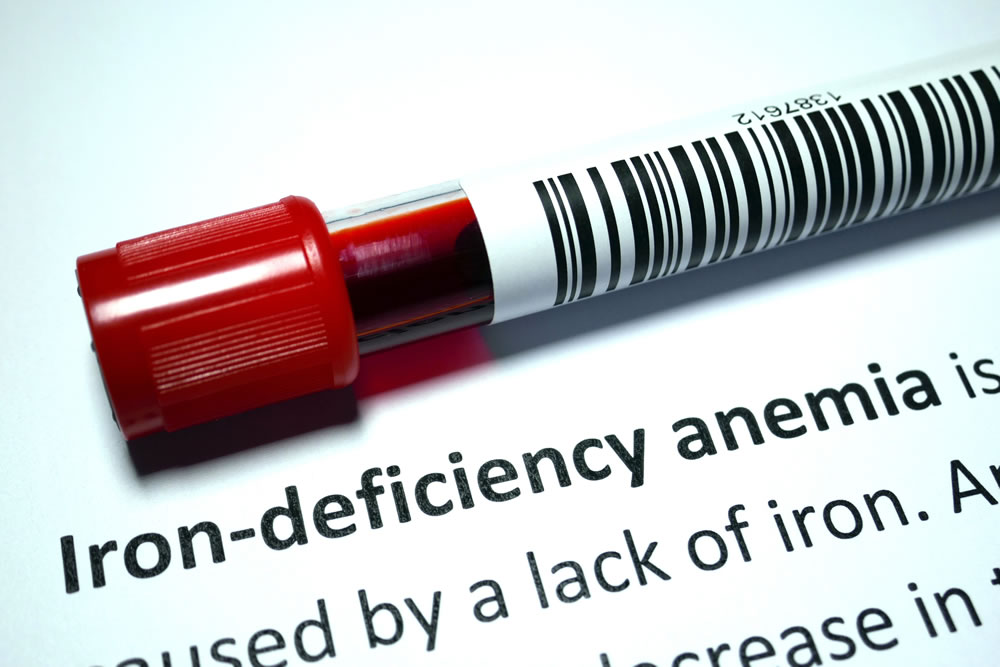
Iron deficiency can manifest in different ways, and some signs are easy to miss or brush off as something else.
Here are some common red flags of low iron to watch out for (3):
Extreme Fatigue: Feeling constantly drained and exhausted, like you’re running on empty? Iron deficiency could be the culprit, making it harder for your cells to get the oxygen they need to pump out energy. It’s like trying to start a campfire with slowly smoldering embers instead of roaring flames.
Weakness: Struggling to lift that grocery bag or climb a flight of stairs? Lack of iron can zap your strength, leaving you feeling weaker than normal. Daily tasks that were once easy now feel like moving mountains.
Pale Skin: Take a good look in the mirror. If your complexion has lost its rosy glow and you look unusually pale or washed out, it could be a sign of anemia. Your blood’s lost its rich, oxygenated hue.
Shortness of Breath: Finding yourself huffing and puffing after minor exertion like walking to the car? Iron deficiency can make it harder for your blood to deliver oxygen efficiently, leaving you gasping for air like a fish out of water.
Rapid Heartbeat and Heart Palpitations: Your heart has to work overtime to pump that oxygen-poor blood around when you’re anemic. That extra effort can leave you with a racing pulse that has nothing to do with cardio.
This extra strain can potentially trigger future complications like enlargement of the heart muscle (left ventricle) and heart failure in severe, untreated cases (4).
Brain Fog and Headaches: Those nagging, incessant headaches could be your body’s way of saying, “Hey, I’m not getting enough oxygen up in this brain!” And if you can’t concentrate, low iron may be the culprit.
Strange Cravings: Suddenly can’t get enough ice chips, dirt, clay or chalk? It’s a bizarre symptom called “pica.” While odd, it can often point to iron deficiency. Your body is so depleted it starts craving the strangest things.
Restless Leg Syndrome: If your legs get the twitches and you constantly need to move them around (especially at night when trying to sleep), it could be a sign your brain isn’t getting enough iron-rich blood and oxygen.
Cracks at the Corners of the Mouth: Those painful cracks that look like line segments could actually be signs of iron deficiency anemia.
If you’re experiencing any of these symptoms, especially in combination, it’s worth getting checked out. Early detection and treatment can prevent more severe complications and get you feeling like your energetic, unstoppable self again.
If heavy periods, intestinal bleeds, or other conditions are the culprit behind your iron deficiency, your doctor will work to manage those problems and stem the iron loss at the source.
Iron Deficiency Diagnosis and Treatment: Taking Action
If your doctor suspects iron deficiency based on your symptoms and risk factors, they’ll likely order some simple blood tests to check your iron levels and status. Tests may include:
Serum Iron: Measures the amount of iron in the blood’s serum. The serum is the clear fluid that remains after red blood cells and clotting factors are separated from your blood. (5).
Ferritin Test: Ferritin is a protein that helps store iron in your body, so this test measures your iron reserves (6).
Transferrin Test: Measures transferrin, a protein that transports iron in the blood (7).
Total Iron-Binding capacity (TIBC) : Measures how well iron binds to transferrin in the blood (8).
Complete Blood Count (CBC) : This test measures your hemoglobin levels and the amount of red blood cells circulating. Since iron is a key component of hemoglobin, low levels can indicate anemia (9).
Once properly diagnosed, the good news is that iron deficiency is usually quite treatable, especially when caught early. Supplements and an iron-rich diet are usually all that’s needed for mild cases. If your anemia is more severe, your doctor may recommend intravenous (IV) iron infusions to deliver a concentrated dose directly into your bloodstream.
How to Prevent Your Iron Stores From Going Low
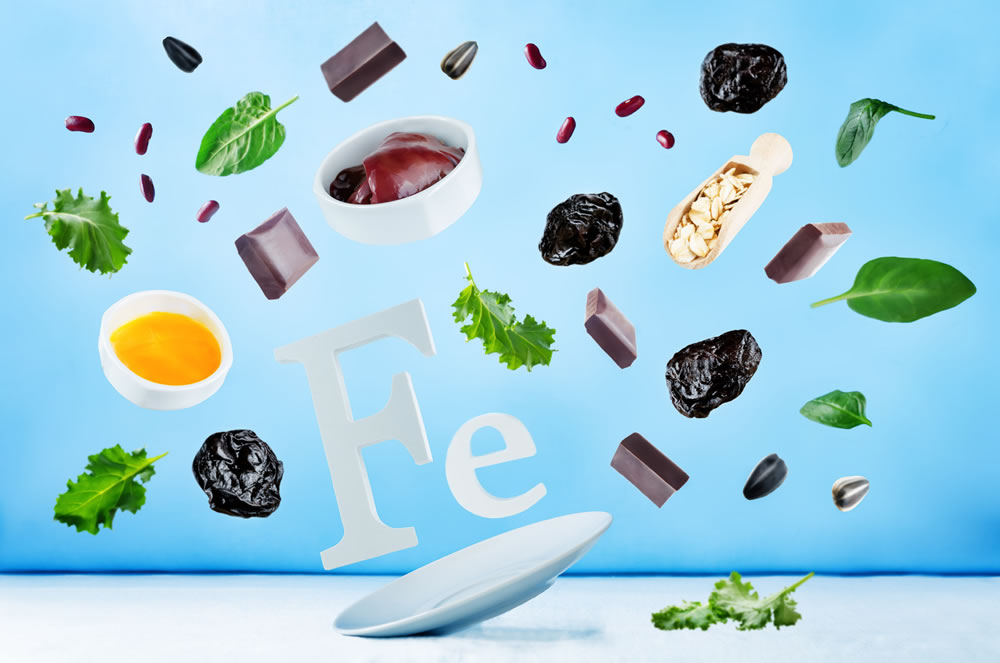
They say an ounce of prevention is worth a pound of cure, and that’s particularly true when it comes to iron deficiency.
In very severe cases where your levels are dangerously low, you might need an iron infusion to quickly correct the deficiency.
But it’s more likely your healthcare provider will likely recommend one or more of the following simple lifestyle adjustments to boost your iron levels and help keep them within a healthy range.
Eat a Balanced Diet: Make sure you’re getting enough iron-rich foods from both plant and animal sources.
Eating iron-rich foods is one of the best ways to keep your iron stores up. Increase intake in the week leading up to your period if you’re prone to heavy bleeding.
Load up your plate with iron-rich foods like:
- Lean red meat
- Seafood like oysters and sardines
- Beans and lentils
- Spinach and other leafy greens
- Tofu
- Cashews
- Fortified cereals and breads
Be sure to pair them with vitamin C-rich foods like oranges, bell peppers and lemon juice to maximize absorption in your gut (10). Research shows that Vitamin C can help the body absorb non-heme iron, a type of iron that comes from plant sources.
Use Cast-Iron Cookware
Cooking with seasoned cast-iron pots and pans can actually increase the iron content of your food – an easy way to boost your intake without even thinking about it.
Be Mindful of Medications
Certain medications like antacids, proton pump inhibitors for acid reflux, and even calcium supplements can impair how well your body absorbs iron. Take iron at least an hour away from these medications. Always check with your doctor or pharmacist about timing and potential interactions.
Drink Black Tea and Coffee Away From Meals
These beverages contain compounds called polyphenols that can inhibit iron absorption. One study found that coffee lowered the absorption from a hamburger by 39%, and tea reduced it by 64% (11).
Iron absorption isn’t affected when coffee or tea is enjoyed away from meals. If you love your tea or coffee while you eat, some research shows vitamin C can block the effects of tea and calcium which both inhibit iron absorption.
More Ways to Maintain Healthy Iron Levels: Take an Iron Supplement
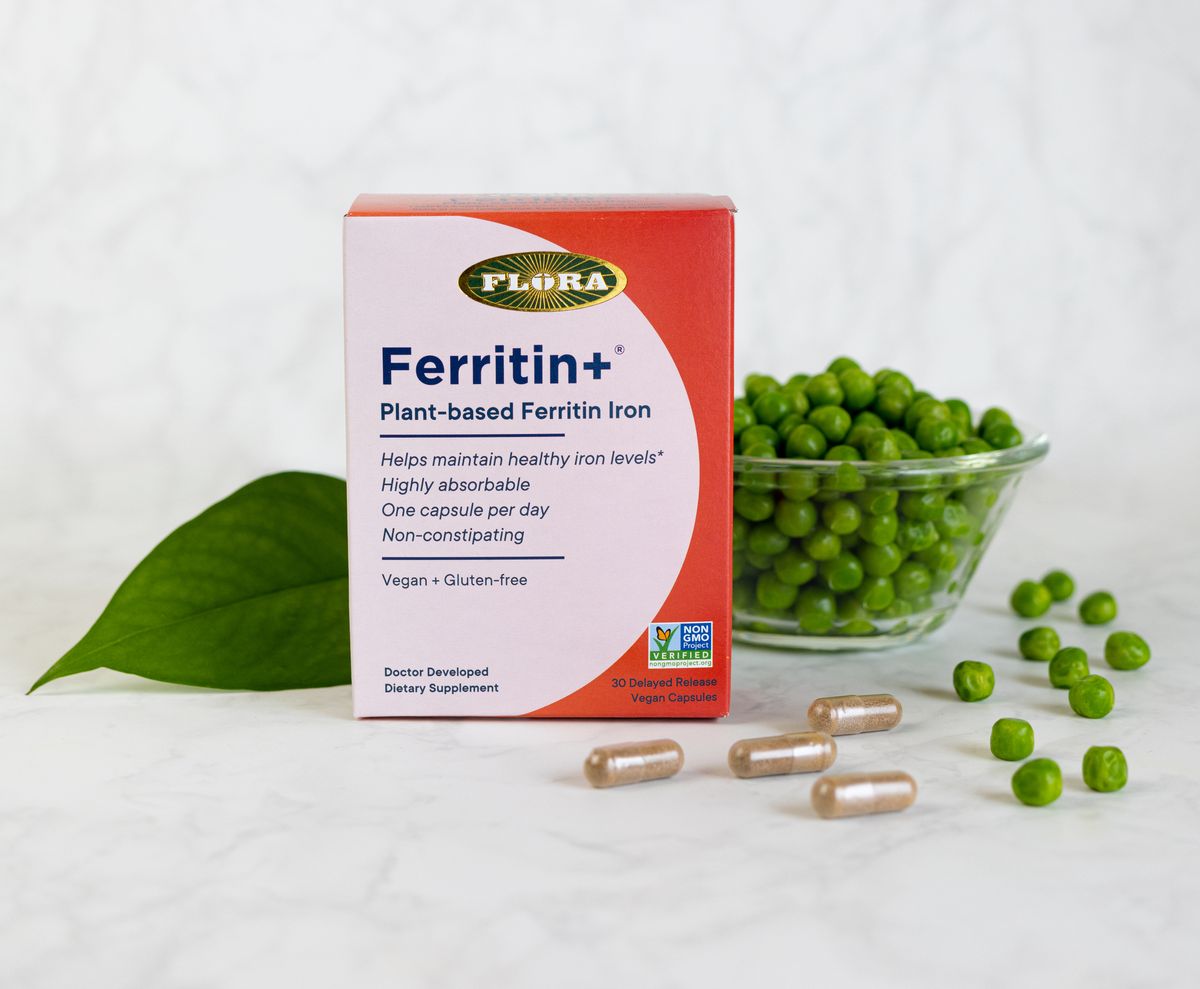
Iron supplements or “iron pills” come in various forms of iron salts including ferrous sulfate, ferrous gluconate, ferric citrate, or ferric sulfate. The truth is some iron supplements are hard to absorb and others can also cause side effects like constipation, nausea, dark stools or an upset stomach (12).
But plant-based supplements like Ferritin+ or liquid formulas like Flora Iron (I’ve tried both!) can help replenish those depleted iron stores without the uncomfortable side effects.*
Ferritin+
For a plant-based, easily absorbed, slow-release formula, Ferritin+ is a great choice. Ferritin is a highly bioavailable form of iron that moves easily through the digestive tract, so it doesn’t lead to constipation or the other common side effects of iron supplements (13).
Each ferritin molecule is packed with iron atoms and uses a unique pathway of absorption, unlike any other form of iron. Ferritin iron derived from organic peas consists of a protein ‘cage’ that protects the iron through the digestive tract, and protects your digestive tract from the iron as well. It’s what allows for a slow release and absorption over time, eliminating the need to add absorption cofactors such as vitamin C. And it won’t give you any of the uncomfortable side effects of the popular salt-based iron supplements mentioned above.*
One capsule of Ferritin+ will supply 111% of your RDI of iron per day.
Flora Iron with B-Vitamin Complex
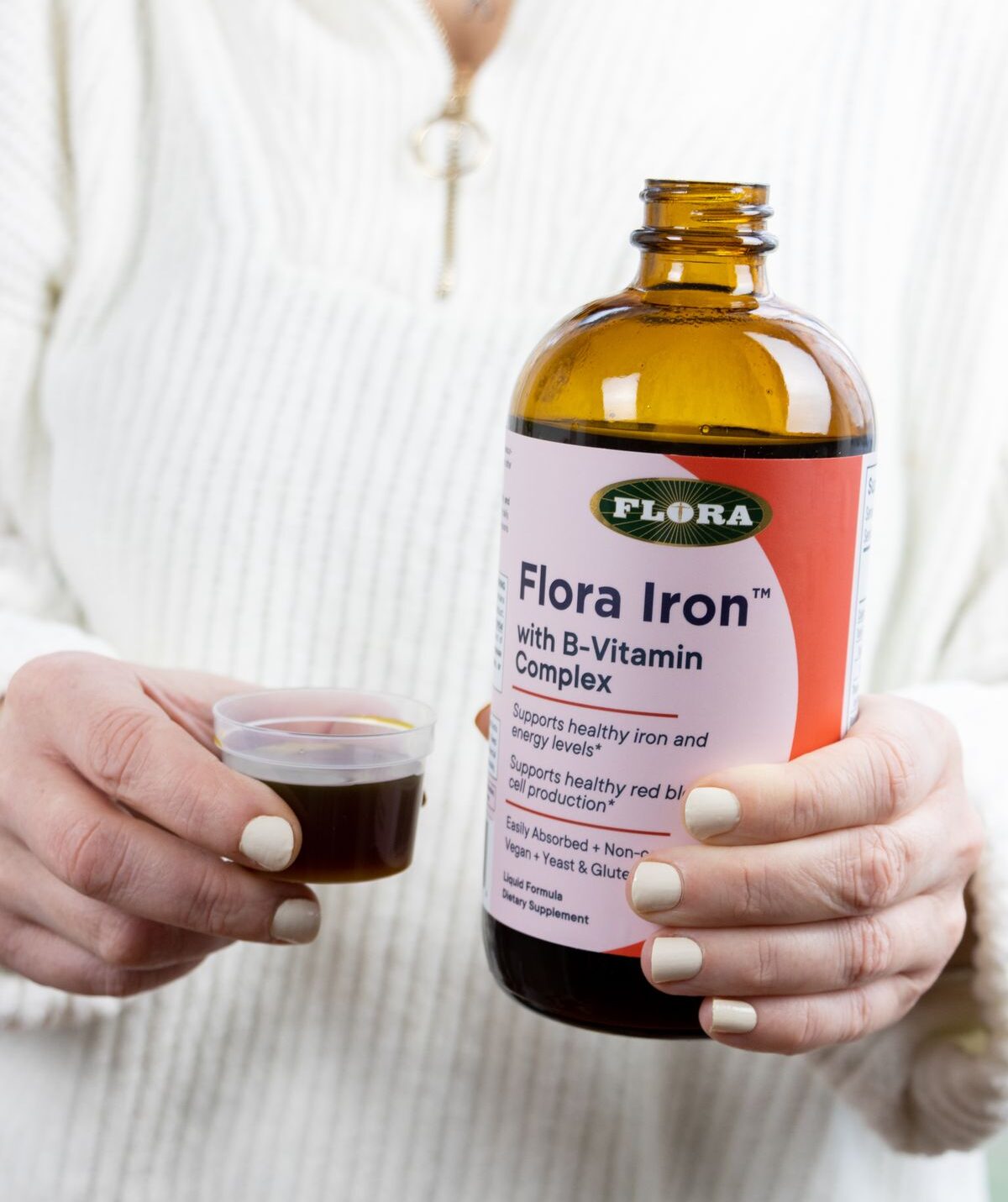
For a drinkable formula that’s just as gentle and effective, Flora Iron contains the liquid form of ferrous gluconate—a form of iron clinically proven to be easily absorbed and easier on the stomach than its solid form.*
In fact, in a test of four kinds of iron, liquid ferrous gluconate was found to boost ferritin levels (stored iron) by 24% in just one month (14). And without any digestive side effects!
Flora Iron also has a blend of energizing B vitamins for extra energy support.*
Not only is Flora Iron super tasty and vegan-friendly, but it’s in a base of vitamin C rich fruit juices and whole foods which may help promote (plant-based) iron absorption in the gut.*
Stay Hydrated
Drinking enough fluids, especially after taking iron supplements, can help the body absorb iron and prevent constipation.
Know Your Risk for Iron Deficiency and Take Action
With all its potential causes and risk factors, the reality is most people face at least some vulnerability to iron deficiency over their lifetime—whether it’s temporary or chronic. The key is being proactive and recognizing if you belong to any high-risk groups so you can monitor yourself accordingly.
If you do fall into a high-risk category like being a woman of childbearing age, pregnant, an infant/child, teenager, frequent blood donor or someone with an absorption issue, don’t ignore potential symptoms.
Iron deficiency may be the world’s most common nutritional deficiency, but it’s also one of the most preventable and treatable.
Incorporating a plant-based supplement like Ferritin+ into your routine is a convenient way to help you maintain healthy iron levels without the side effects that most iron supplements come along with.*
Final Thoughts: Stay Vigilant to Maintain Optimal Iron Levels
Iron deficiency is one of the most common and widespread nutritional deficiencies, but also one of the most preventable and treatable.
Unexplained exhaustion that sleep can’t fix, weakness, shortness of breath, pale skin, rapid heartbeat, dizziness, and brain fog, could all be signs your body’s cells are thirsty for iron.
Have your doctor check ferritin and iron levels through simple blood tests, especially if you develop extreme symptoms.
Use the iron-boosting tips above if you’re at risk for iron deficiency, and for a supplement that is effective at helping maintain healthy iron levels while being gentle on your stomach, try Ferritin+ or Flora Iron from Flora.*
Your body, and all its hard-working cells, will thank you for keeping those iron levels in tip-top shape.
Think your iron could use boost?
➡ Visit Flora Health to give Ferritin + (capsules) or Flora Iron (liquid) a try!
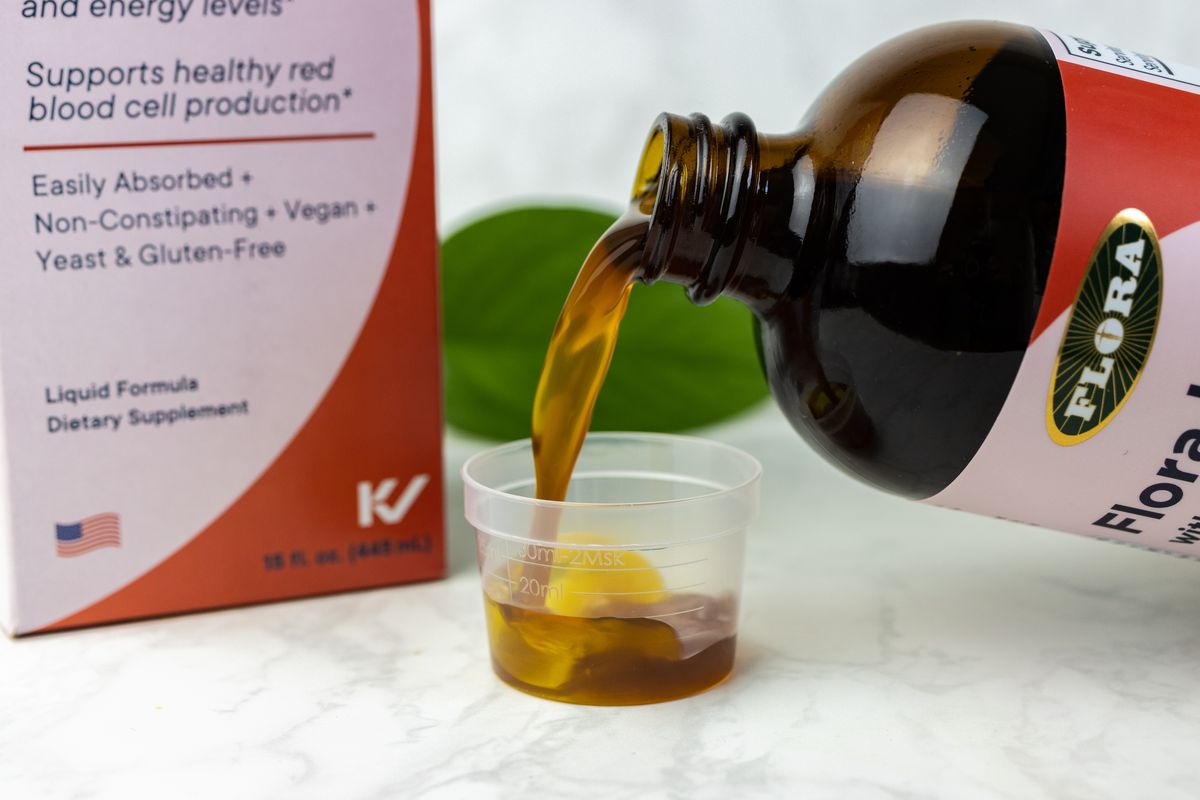
*These statements have not been evaluated by the Food and Drug Administration. This product is not intended to diagnose, treat, cure, or prevent any disease.
Better Living uses affiliate links. If you make a purchase through them, we may receive a small commission (for which we are deeply grateful) at no cost to you.

